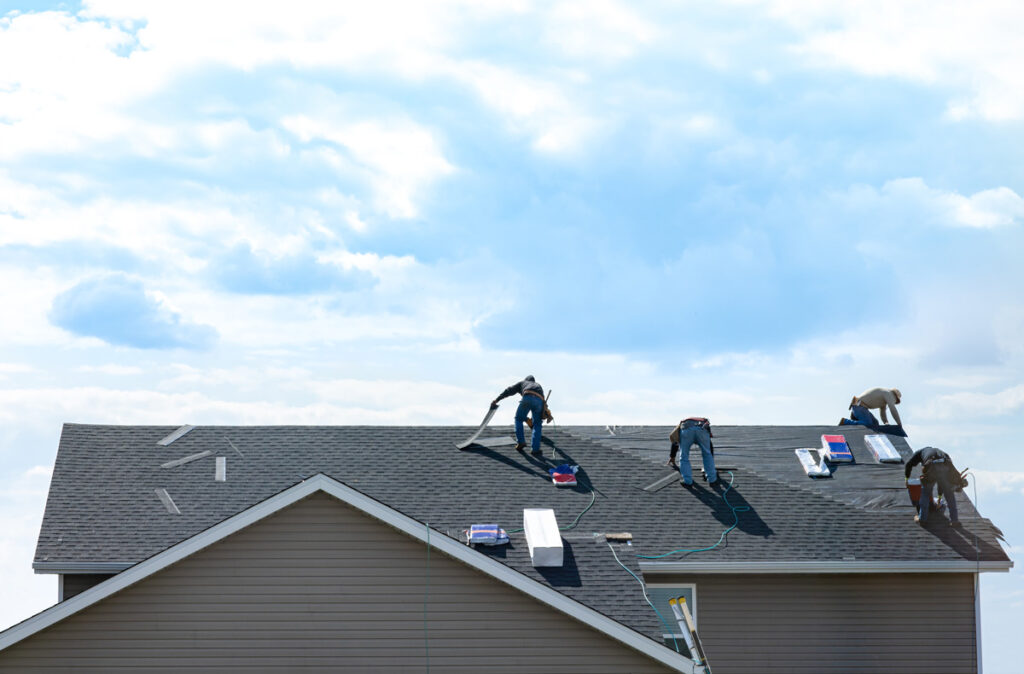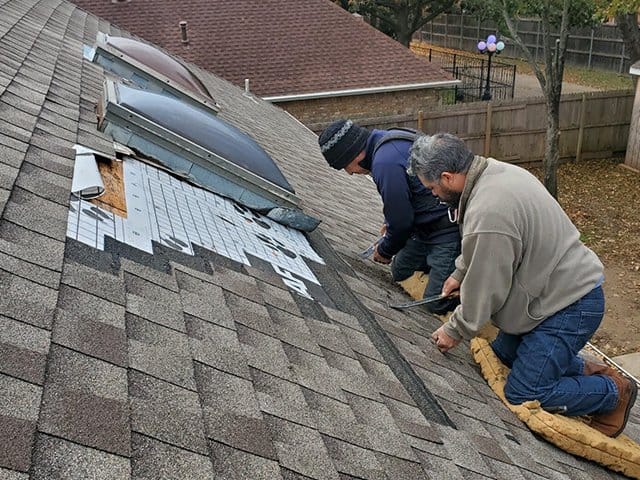Roofers Oahu: Skilled Professionals for Roof Installations and Repair Works
Checking Out the Numerous Types of Roofs: Which One Is Ideal for Your Home?
When taking into consideration the myriad types of roofing systems available, it is vital to evaluate just how each option lines up with your home's one-of-a-kind needs, consisting of climate conditions, visual choices, and structural performance. From the classic gable roofing system that effectively networks rainwater to the contemporary level roofing offering urban adaptability, each design offers unique advantages and obstacles.
Gable Roofing Systems
Saddleback roofs, defined by their triangular shape and sloping sides, are a preferred selection among property owners seeking both visual appeal and performance. This roofing system design properly enables effective water runoff, lowering the risk of water pooling and subsequent damage. Furthermore, the high slopes develop enough attic room, which can be used for storage space or also exchanged living locations.
Among the main benefits of saddleback roofs is their ability to hold up against rough climate condition. The layout assists in minimizing wind resistance, making them particularly suitable for locations susceptible to tornados. Furthermore, gable roof coverings can be constructed utilizing a variety of products, including shingles, ceramic tiles, and metal, giving homeowners with flexibility in design and spending plan.
From an architectural viewpoint, gable roofings can boost the aesthetic allure of a home, providing a classic and timeless look. They can enhance numerous building designs, from traditional to modern designs. Nevertheless, it is vital to consider possible disadvantages, such as the sensitivity to snow build-up in cooler environments. In general, gable roofings continue to be a popular choice because of their balance of usefulness and style, appealing to a vast array of house owners.
Apartment Roofs
While usually forgotten for more typical roof covering designs, level roofing systems provide one-of-a-kind advantages that deal with certain building needs and contemporary design choices. These roofs are characterized by their minimal pitch, allowing for effective use room, especially in metropolitan settings where making best use of square video is important.
One significant benefit of level roof coverings is their convenience. They can be used as additional living spaces, such as rooftop gardens, outdoor patios, or photovoltaic panel setups, boosting the performance of a home. Moreover, flat roofing systems are generally simpler and safer to browse during upkeep, helping with repair work and examinations without the difficulties posed by steep inclines.
Flat roofs can likewise be much more affordable in regards to materials and installment. With a less complex design, they typically need fewer sources, converting right into reduced labor expenses. Nevertheless, it's crucial to consider drain and waterproofing, as flat roofing systems can be vulnerable to merging water otherwise effectively made.

Hip Roofing Systems
Hip roofs stand apart for their elegant design and structural stability, making them a prominent option among house owners. Identified by inclines on all four sides, hip roofing systems offer a healthy aesthetic that matches numerous architectural styles - roof repair oahu. The in proportion nature of these roofings aids to disperse weight evenly, enhancing stability and toughness
One of the key advantages of hip roof coverings is their capacity to endure harsh weather condition conditions. The sloped surface areas promote effective water drain and snow overflow, lowering the danger of leakages and structural damage. Furthermore, the layout lessens wind resistance, making hip roofing systems less prone to wind uplift compared to other roofing system types.


Shed Roofings
Lost roofings, unlike the intricacy Check This Out of hip roof coverings, offer a minimal and structured style that attract modern appearances. Characterized by a solitary sloping surface, dropped roof coverings are usually utilized in modern design, garden sheds, and other practical frameworks. This simplicity not just improves aesthetic appeal but additionally enables efficient water runoff, making them ideal for various climates.
Among the main benefits of shed roof coverings is their cost-effectiveness. With fewer products called for and a simple setup procedure, house owners can conserve both money and time. The layout likewise permits the consolidation of big windows or skylights, promoting natural light and creating roomy interiors.
However, it is vital to consider the prospective disadvantages, consisting of restricted insulation alternatives and the demand for mindful layout to stay clear of too much warmth buildup. In addition, lost roofs may not blend seamlessly with standard architecture, which could be a concern for some homeowners.
Ultimately, lost roof coverings present a functional and trendy roof service here are the findings for those looking for modernity and performance. When choosing a roofing type, evaluating individual visual preferences and practical requirements will certainly guide homeowners to the most effective option for their unique demands.
Mansard Roofings
Mansard roof coverings, identified by their distinctive four-sided layout, are a trademark of French architecture that incorporates elegance with functionality. This building style includes two inclines on each side, with the lower slope being steeper than the top one. The distinct setup allows for added living area in the top degrees, making it an excellent option for home owners seeking to optimize usable location without increasing the structure's impact.
Among the considerable benefits of a mansard roofing system is its adaptability. It can be adjusted to different building styles, from standard to modern, improving the visual allure of any type of home. In addition, the sufficient space created under the roof covering can easily fit dormer windows, which enable all-natural light and air flow, further improving the convenience of the living area.
Nonetheless, potential home owners ought to take into consideration the upkeep requirements linked with mansard roofs. The steep slopes can cause raised wear from climate exposure, requiring normal evaluations and fixings. Furthermore, installation costs may be greater contrasted to less complex roof designs due to the complexity of construction. Eventually, a mansard roof can be an outstanding selection for those focusing on design and room.
Conclusion
Finally, the option of a proper roofing type depends upon individual needs, environment considerations, and visual choices. Each roofing style presents unique benefits, such as the effectiveness of gable roofing systems, the modern allure of shed roof coverings, and the stability of hip roof coverings. Furthermore, level roofings provide usefulness for metropolitan settings, while mansard roofing systems provide added home regardless of higher installation costs. Ultimately, a thorough evaluation of these factors will guide house owners in making an informed this contact form decision.
From the traditional gable roofing system that effectively networks rain to the modern-day level roof offering city versatility, each style presents distinctive advantages and difficulties (roof repair oahu). Furthermore, the style decreases wind resistance, making hip roofing systems less prone to wind uplift contrasted to other roof covering kinds
Dropped roofs, in comparison to the intricacy of hip roofing systems, use a minimal and structured layout that charms to contemporary aesthetics. Each roof style presents special advantages, such as the performance of gable roofs, the modern appeal of shed roofing systems, and the stability of hip roofing systems. Flat roofing systems provide usefulness for metropolitan settings, while mansard roof coverings provide added living space despite greater installment prices.